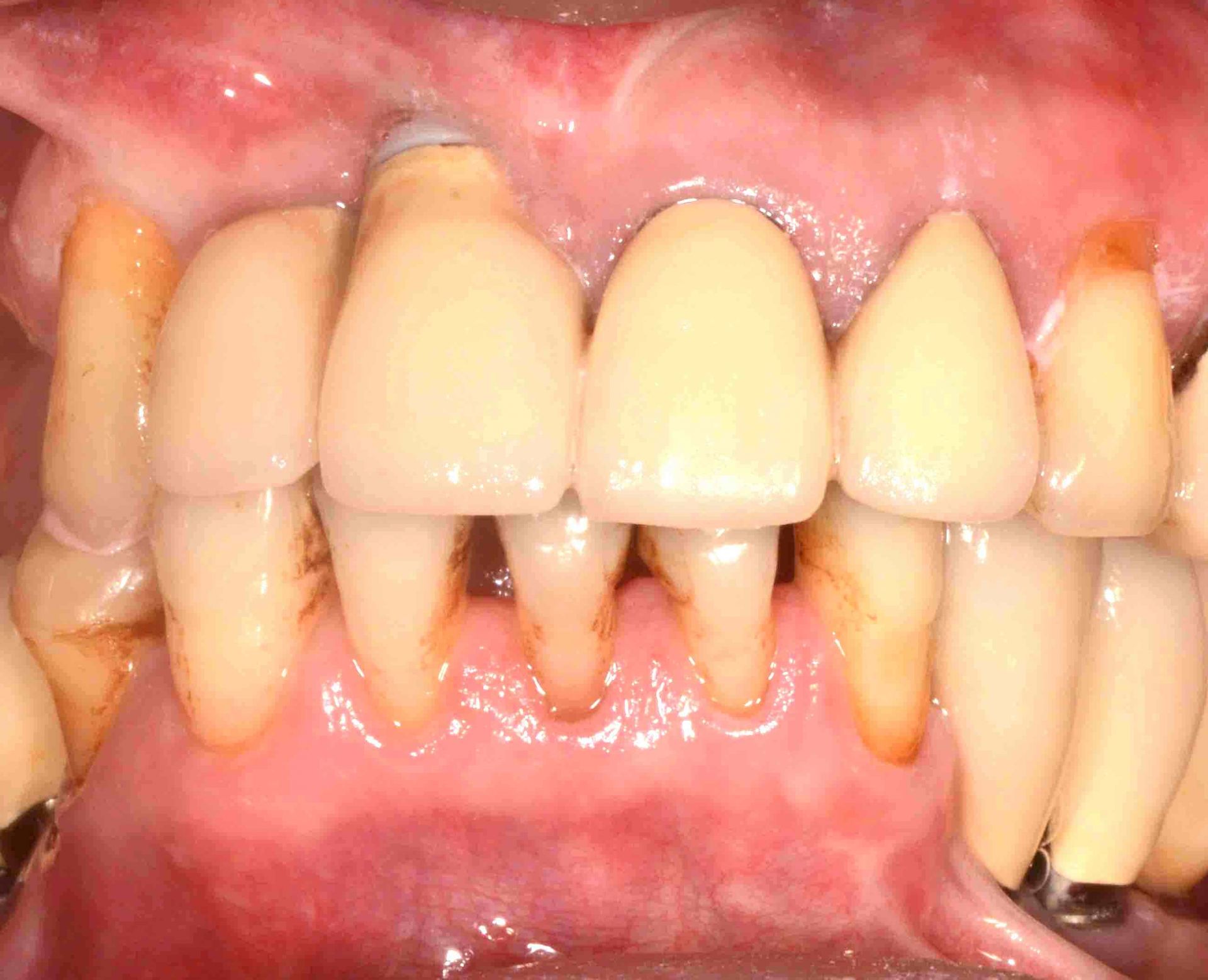The most common non-plaque induced "soft-tissue" or "aesthetic" problems of implants:
-
Soft tissue recession
-
Loss of keratinised mucosa
-
Loss of inter-proximal tissue and scalloping ("papilla")
-
Thin "see-through" tissue and /or fenestrations
-
Scar tissue, color and pigmentation mismatch


Recession, lack of keratinised mucosa and other "mucogingival" problems can be often encountered around dental implants. Apart from aesthetic implications, such complications might predispose to long term problems and inflammation. Whether to intervene surgically to correct or improve mucogingival conditions is not an easy decision and one needs to carefully assess the conditions, as often surgery runs the risk to deteriorate the problem.
One of the most critical diagnostic decisions is to confirm that the problem is limited to or originates from the soft tissue and there is no underlying predisposition such as malposition of the implant or improper prosthetic design. If the soft tissue problem is "secondary", that means it is created from implant malposition or iatrogenic factors, surgical intervention on the soft tissue without modifying the underlying problems might make things worse or fail to solve the problem. If the problem diagnosed is however based on the lack of soft tissue volume or keratinised tissue, the Hybrid CT-Epithelial graft is one of the preferred methods of action, as it is minimally invasive, ensures better healing conditions and can achieve both keratinisation and volume augmentation.
As the actual technique might be difficult to fully comprehend by watching only clinical videos, today we have prepared for you a quick "explainer" video where you can see the full design of such a surgery. Then with a new eye, take a closer look how this is applied in the case of a peri-implantitis surgery!
One of the most critical diagnostic decisions is to confirm that the problem is limited to or originates from the soft tissue and there is no underlying predisposition such as malposition of the implant or improper prosthetic design. If the soft tissue problem is "secondary", that means it is created from implant malposition or iatrogenic factors, surgical intervention on the soft tissue without modifying the underlying problems might make things worse or fail to solve the problem. If the problem diagnosed is however based on the lack of soft tissue volume or keratinised tissue, the Hybrid CT-Epithelial graft is one of the preferred methods of action, as it is minimally invasive, ensures better healing conditions and can achieve both keratinisation and volume augmentation.
As the actual technique might be difficult to fully comprehend by watching only clinical videos, today we have prepared for you a quick "explainer" video where you can see the full design of such a surgery. Then with a new eye, take a closer look how this is applied in the case of a peri-implantitis surgery!
